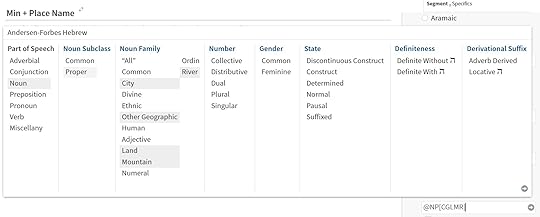The Location of Mount Sinai and the “Yahweh’s March from the South” Passages: An Addendum to the Naked Bible Podcast Episode
Those of you who follow the Naked Bible Podcast know that recently we covered Exodus 3:1 in three episodes. That verse says: “Now Moses was keeping the flock of his father-in-law, Jethro, the priest of Midian, and he led his flock to the west side of the wilderness and came to Horeb, the mountain of God.” I don’t accept the traditional location for Mount Sinai (Jebel Musa) because of this verse and the verses below that have Yahweh coming to his land (Canaan) or temple from Teman, Paran, Edom, Seir. Some of the passages that describe this coming link those place names specifically with Sinai. These place names are all south of Canaan, have some adjacent relationship to Midian, and are linked to Sinai. Jebel Musa simply cannot accommodate these passages. I also do not believe Mount Sinai was Jebel al-Lawz in modern Saudi Arabia. I used to hold that view but have abandoned it, mainly because it cannot accommodate the “march from the South” passages either. I believe a Sinai location must account for these passages and still be consistent with Exod 3:1 (and other verses).
I realize that many listeners (and readers) will never have heard of the “march from the South” motif in the Hebrew Bible> But it’s there, plain as day. Here are the passages we noted in the podcast episode (note the boldfaced underlining):
Deut 33:1-2
1 This is the blessing with which Moses the man of God blessed the people of Israel before his death. 2 He said,
“The LORD came from Sinai
and dawned from Seir upon us;
he shone forth from Mount Paran;
he came from the ten thousands of holy ones,
with flaming fire at his right hand.
Hab 3:3-7
3 God came from Teman,
and the Holy One from Mount Paran. Selah
His splendor covered the heavens,
and the earth was full of his praise.
4 His brightness was like the light;
rays flashed from his hand;
and there he veiled his power.
5 Before him went pestilence,
and plague followed at his heels.
6 He stood and measured the earth;
he looked and shook the nations;
then the eternal mountains were scattered;
the everlasting hills sank low.
His were the everlasting ways.
7 I saw the tents of Cushan in affliction;
the curtains of the land of Midian did tremble.
Judg 5:4-5
4 “LORD, when you went out from Seir,
when you marched from the region of Edom,
the earth trembled
and the heavens dropped,
yes, the clouds dropped water.
5 The mountains quaked before the LORD,
even Sinai before the LORD, the God of Israel.
Having defended the Jebel el-Lawz some years back, I know that it is common to take these place names and have Moses and the Israelites going TO and FROM the various locations. That is not possible given that, in each case in the verses above, the same preposition (min) is before all the place names. The preposition min consistently means “FROM” or “OUT OF” and never “TO”. That is, it describes movement from a point of origin, not to a destination. One could also use min more abstractly to denote something emanating FROM a source, but not moving TOWARD a source. In other words, these verses cannot be read as the Israelites were in some instances traveling TO these places. They are all FROM (min). This realization led me to abandon the Jebel el-Lawz idea. The idea of a “to and from” wandering being described by these places names is directly falsifiable from the text and the semantics of min.
For those curious, I have created a syntactical search to prove this point using the Andersen-Forbes Phrase Marker Analysis (“Syntactical Database”) in Logos Bible Software. Here is what the search looks like:

The search asks for the database to locate all places in the Hebrew Bible where preposition min precedes a proper noun — specifically, a place name that includes cities, lands (countries), mountains, and rivers.
The next image is for any who have Logos Bible Software and would like to reproduce the search. The image shows the search dialogue with respect to the noun morphology and semantics I’ve asked for:

The results of the search yield 512 hits. I have put the results (showing Hebrew and English) into one PDF file. Here it is for anyone to peruse the results.
Obviously, we’re dealing with English translations in these hit results. If you go through all the results, you’ll find a handful of places where the translator uses the word “to” for min. But at such points you will find other translations that don’t. What you have to ask yourself to be thinking about the semantics is this: Is the noun min precedes a destination point? Is someone or something going toward the “min point” or proceeding FROM the “min point”? That will take care of any odd English choices.
Again, I post this for those further interested in why I abandoned the Jebel el-Lawz location. The “march from the South” passages are crucial and must be accounted for (in any view).
The post The Location of Mount Sinai and the “Yahweh’s March from the South” Passages: An Addendum to the Naked Bible Podcast Episode appeared first on Dr. Michael Heiser.
Michael S. Heiser's Blog
- Michael S. Heiser's profile
- 934 followers



